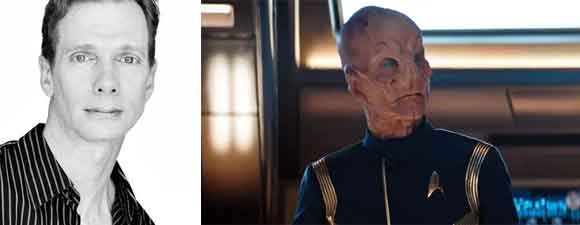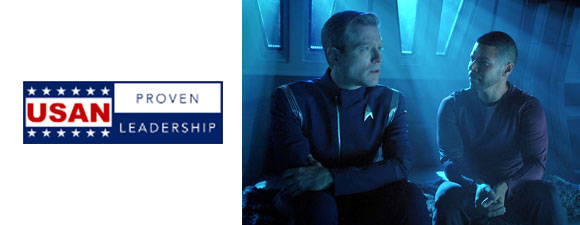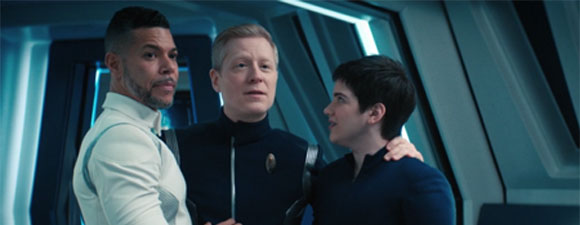Jones – Gratitude For My Career
2 min read
In a new interview with Backstage, Doug Jones spoke about joining the Star Trek franchise, behavior as an actor, and how to act when your character is non-verbal.
Jones was nervous when it came to getting a role on a Star Trek show. “I’ve been acting for almost thirty-five years now,” he said. “I’ve been in the sci-fi genre, horror, fantasy, comic books. All those fandoms bring such excitement and such loyalty with them. The Star Trek fans are a cut above all that. They feel a sense of ownership of the franchise that no other fandom does. I love that. It keeps us on our toes. Coming into this franchise, I wanted to get everything right. I owe it to these people who have devoted their lives to this fandom. Being able to create a new species of alien, too, I’m a Kelpien, which has never been seen anywhere in any of the other series or movies. That was another heavy responsibility. I want to make this another species that will carry on in the legacy that is Star Trek.”
Unlike some actors, Jones is mindful of the fact that there are those who helped him to advance in his career, and that he should mind his manners as an actor and not be a diva. “Creature effects makers, the people who make the designs and the monsters and creatures that go on to me, they’re the ones who really catapulted my career forward,” he said. “Once they found me and built a couple things and worked with me on set, a couple things came into play: How do you wear their designs? Do you perform well in them? And are you easy enough to get along with and do not complain too much? As actors, we’re all known as a bunch of divas who are like, ‘Yeah, this is hot. Get it off me.’ If you’re not doing that, it’s exceptional. They think you’re the nicest guy in the world.”
How does Jones approach roles where the character is non-verbal? “We as actors, we just have to remember that dialogue comes in many forms,” he said. “It’s not just verbal; visual dialogue is absolutely a part of our communication. We do it as people every day. Facial expressions [and] gestures like a tilt of the head can say volumes, in the right setting with the right context. I use all that when I’m doing a non-verbal sort of character.”






